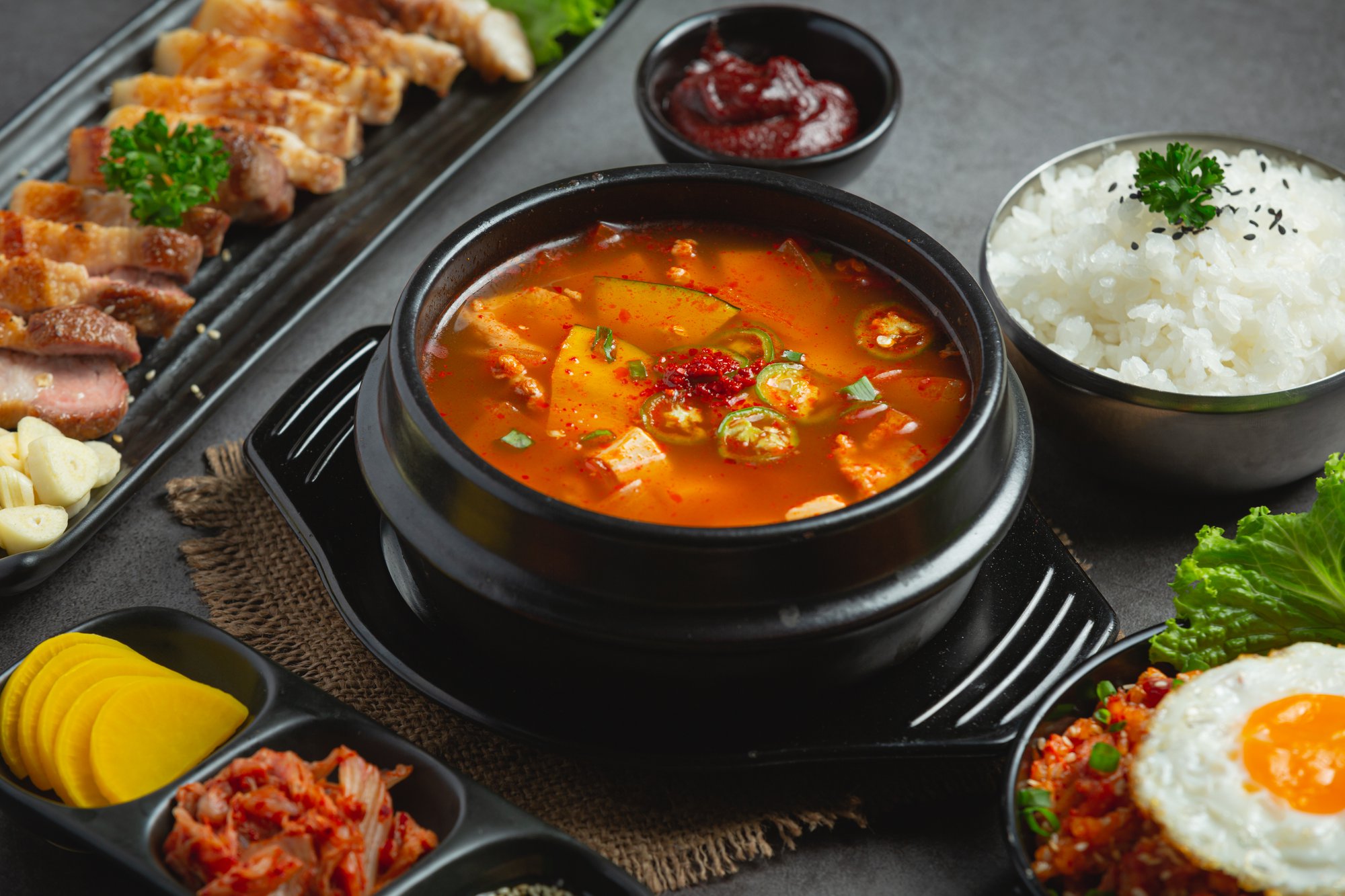
Introduction
The China food market remains one of the most dynamic and influential in the world. Despite short-term moderation, it continues to evolve rapidly across consumer behavior, retail ecosystems, and innovation. For global brands, success depends on understanding not only where the growth lies but also how to adapt to shifting consumer expectations and a tightening regulatory landscape.
This outlook distills 10 essential insights shaping the China food market trajectory, and what they mean for international food innovators planning their next move.
10 Insights for Global F&B Brands
1. Growth Remains Steady but Selective
China’s food industry continues to grow, though at a more measured pace. S&P Global Ratings projects sector growth of 5–6 percent, down from 8.2 percent the previous year, signaling a natural slowdown after the post-pandemic rebound.
This moderation reflects a maturing consumption landscape rather than weakness. Domestic demand remains resilient, supported by dining and leisure consumption. Beverage and supplement categories are expected to outperform, benefiting from health-conscious consumers, while packaged and pre-cooked foods sustain steady momentum.
Global food brands should treat China as a stable long-term growth engine, not a short-term rebound market, and align product pipelines with sustainable, mid-single-digit growth expectations.
Overall, this steadier pace signals a healthier, more sustainable phase for the China food market, where success depends on brand differentiation, consumer trust, and operational efficiency rather than rapid expansion.
To gain insights into effective strategies for navigating China's evolving food and beverage market, explore our article on 3 Proven Strategies Top Brands Use to Win.
2. Tier-2 and Tier-3 Cities Drive the Next Wave
The next phase of growth in the China food market is unfolding beyond Beijing and Shanghai. Rising incomes, maturing digital ecosystems, and expanding middle-class populations are turning tier-2 and tier-3 cities into the country’s most dynamic consumer markets.
According to Bain & Company’s China Shopper Report 2025, smaller cities outperformed major urban centers in FMCG value growth last year. Households in lower-tier markets recorded spending increases of 3.3 to 6.2 percent, compared with about 2 percent in tier-1 cities.
Supporting this trend, Euromonitor International’s China Cities Review 2024 highlights the digitalization and retail modernization of inland provinces, where logistics and e-commerce platforms are bringing premium goods to millions of new consumers.
Global F&B leaders such as Starbucks and Luckin Coffee are already capitalizing on this shift, expanding aggressively into tier-3 cities where rents are lower, mobile-ordering penetration is high, and digital engagement is accelerating.
3. Health, Freshness, and Functionality Are Core Drivers
Health and wellness are now central to consumer decisions in the China food market. A recent analysis by China Daily shows that China’s functional beverage launch index climbed to 253 by June 2024, more than double the Asia-Pacific average of 11 % during the same period.
More broadly, Statista reports the functional foods segment in China exceeded ≈ 360 billion yuan in 2025, with younger consumers driving demand for products that enhance immunity, digestion or skin health.
Chinese shoppers are also increasingly equating freshness with safety and nutritional value. They prefer shorter supply chains, transparent ingredient sourcing and credible functional claims.
With China’s State Administration for Market Regulation accelerating approvals for functional food claims, global brands localizing R&D can move faster in formulating and registering science-backed products tailored to Chinese preferences.
For a comprehensive look at the confectionery market's evolution towards health-conscious products in China, delve into our Deep Dive into the Confectionery Market in China [2025].
4. Convenience Meets Premiumization
Convenience in the China food market is now evolving into premium experiences. According to China Daily, the ready-to-eat meal market grew to 419.6 billion yuan in 2022, with year-on-year growth at 21.3 percent and projections to exceed 1 trillion yuan by 2026.

Meanwhile, Anuga Select China reports the convenience-food market reached 673.6 billion yuan in 2023, with nearly half of consumers citing taste, health and quality as reasons for choosing convenience meals.
These data points show that small-pack formats, gourmet instant meals, and premium vending solutions are increasingly defining convenience. Global brands that can premiumize everyday categories, from single-serve meals to RTD beverages, without losing affordability, will lead this evolution.
This trend rewards brands that merge efficiency with indulgence, giving time-pressed professionals a reason to trade up rather than trade out.
5. Digital Ecosystems Define Market Access
In the China food market, digital ecosystems are the primary gateway for brand engagement. Platforms such as Douyin and Xiaohongshu fuel discovery and sales, while livestreaming, social commerce and community-based shopping formats challenge traditional retail structures.
For example, livestreaming commerce in China is expected to surpass 4.5 trillion yuan in gross merchandise value in 2024. Additionally, China’s social-commerce sector generated approximately USD 579.6 billion in 2024 and is projected to grow at a CAGR of 35.8% through 2033.
Given these shifts, brands entering or scaling in China must go beyond standard e-commerce. Success now requires investing in influencer partnerships, immersive storytelling, and omnichannel strategies that integrate online engagement with offline retail presence.
At the same time, evolving data-localization rules require global brands to balance localized engagement with compliance on consumer privacy and digital advertising standards.
6. AI and Automation Reshape Operations
Automation and artificial intelligence are shifting how the China food market operates from end to end. For example, Yum China Holdings launched its AI-enabled “Q-Smart” assistant to support store managers with tasks like labour scheduling, inventory management, and safety inspections. It uses voice-command and wearable devices to streamline operations at select locations.
Meanwhile, in traditional fresh-food agriculture and restaurant settings, robots are being integrated into core activities. A humanoid robot in a tea garden in Guangdong, for instance, picks tender tea buds with machine precision—demonstrating how automation is entering even legacy supply chains.
For global franchise operators and quick-service brands, AI adoption enables consistent food quality and operational efficiency across hundreds of outlets, providing a clear competitive edge in a market driven by scale and consistency.
7. Supply Chain Control Becomes a Differentiator
Cold-chain logistics and traceability are now strategic advantages in the China food market. According to an industry report cited by People’s Daily Online, demand for food-related cold-chain logistics reached 192 million tons in the first half of the year, while segment revenues climbed to around 279.94 billion yuan (≈ US$39.3 billion).

In 2024, the total demand for cold-chain logistics hit 365 million tons, up 4.3 percent year-on-year, with massive growth in refrigerated vehicle sales and new international import routes opening.
Brands investing in next-generation traceability, including blockchain tracking, RFID-tagged shipments, and on-pack QR transparency, are building consumer trust while satisfying regulatory requirements.
For global brands selling fresh, chilled, or premium foods in China, partnering with experienced cold-chain providers is as crucial as product innovation itself.
8. Food Safety and Regulation Tighten
Food safety and compliance remain at the core of China’s food policy. The government’s 10-year food-supply modernization plan, launched in 2025, underscores stricter enforcement of labeling, import certification, and traceability requirements across categories. These measures also include heightened oversight of functional food and health product claims, affecting categories like fortified beverages and supplements — segments where many international brands are expanding.
For global F&B and CPG brands, this regulatory tightening means more rigorous documentation and transparency during product registration and customs clearance. Authorities such as the GACC (General Administration of Customs of China) are intensifying checks on origin tracing, allergen labeling, and nutritional claims. Brands that can demonstrate verifiable supply chains and transparent data are gaining faster approvals and deeper consumer trust.
For restaurant groups and franchise operators, local food-handling compliance and transparent sourcing are now part of brand equity. Partnering with local experts for audits, ingredient registration, and cold-chain validation helps de-risk entry and maintain consistency across multiple outlets.
9. Cross-Border Channels Offer Two-Way Growth
In the China food market, cross-border trade is evolving into a dual opportunity—both for inbound brand entry and outbound Chinese manufacturing.
According to recent customs data, overall Chinese exports climbed 5.8 % in June year-over-year, aided by a brief tariff reprieve. Meanwhile, exports of Chinese health foods to the U.S. dropped 12.2 % in the first half of 2025, underscoring the importance of diversified export strategies.
For international brands entering China, platforms such as Tmall Global, JD Worldwide, and Kaola remain critical gateways for testing product-market fit before committing to full-scale local production.
For Chinese producers, the shift is toward premium formats and functional products that can attract higher margins in overseas markets.
Brands on both sides must monitor tariff volatility, regional trade flows and platform compliance to succeed in this two-way channel landscape.
10. Sustainability and Localization Define Longevity
Sustainability increasingly drives decisions in the China food market. A recent survey found that roughly 66 % of Chinese consumers are willing to pay a premium for foods that address environmental issues. Innova Market Insights report that 36 % have deliberately reduced food waste and raised their sustainability standards.
Further, research by the consultancy Mazars showed that over 80 % of Chinese consumers plan to increase their sustainable consumption in the next three years, and about 40 % expect more than 80 % of their purchases to be sustainable.
China’s green-manufacturing incentives and circular-packaging initiatives now reward global brands that localize sustainable production, creating both cost and reputational advantages.
Localization also strengthens brand longevity. When global brands tailor ingredients, packaging, and storytelling to regional culture, rather than simply translate them, they earn deeper trust and stronger market longevity.
Conclusion
The China food market is entering a new era that values depth over speed and innovation over imitation. Brands that thrive will balance agility with authenticity, combining local insights, sustainable practices, and technology-driven efficiency.
Global leaders that treat China not just as a sales destination but as a co-innovation hub will be best positioned for long-term relevance.
FAQs
1. Is the China Food Market still growing?
Yes. The China Food Market continues to expand at a steady pace, with growth stabilizing around 5–6 percent annually. This moderation reflects a more mature and resilient consumer economy rather than slowdown. While high-speed expansion has eased, strong demand for functional foods, premium beverages, and ready-to-eat products ensures that the China Food Market remains one of the world’s most attractive growth opportunities for global food brands.
2. Which food segments show the most opportunity in the China Food Market?
The strongest opportunities lie in health and wellness, premium convenience, and sustainability-driven categories. Functional beverages, plant-based snacks, and clean-label packaged foods are gaining traction among younger, urban consumers. For global brands, entering these fast-evolving niches within the China Food Market requires balancing local taste preferences with science-backed innovation and transparent communication to earn consumer trust and loyalty.
3. How are digital platforms influencing brand access in the China Food Market?
Digital ecosystems define how consumers discover and engage with food brands in China today. Platforms such as Douyin, Xiaohongshu, and Tmall have replaced traditional advertising as the main drivers of product visibility. Social commerce, livestreaming, and influencer-led campaigns allow brands to reach consumers directly and gather instant feedback. To succeed in the China Food Market, companies must integrate online engagement with offline experiences to create seamless, omnichannel connections that build both awareness and conversion.
4. What are the biggest risks for foreign brands entering the China Food Market?
The main challenges for international brands include navigating complex regulations, managing supply-chain reliability, and competing with sophisticated local players. China’s food-safety and labeling standards are tightening, making compliance and traceability non-negotiable. Additionally, logistics disruptions and cultural nuances can affect performance. To mitigate these risks in the China Food Market, global companies should partner with local experts, conduct continuous market monitoring, and prioritize transparency in both operations and communications.
5. How should global brands prepare for future growth in the China Food Market?
To succeed long-term, brands must view China not only as a consumer market but as a co-innovation ecosystem. Investing in automation, sustainability, and localized product development will be critical. Brands should also adapt digital strategies for real-time consumer engagement and ensure compliance with evolving regulations. The China Food Market rewards those who combine agility with authenticity, blending global best practices with localized insight to stay relevant in a fast-changing landscape.g younger, urban consumers. For global brands, entering these fast-evolving niches within the China Food Market requires balancing local taste preferences with science-backed innovation and transparent communication to earn consumer trust and loyalty.
Take Action: Accelerate Your Entry into China’s Food Market
Succeeding in China’s Food Market takes more than data. It takes local expertise, strategic alignment, and an insider’s view of how consumers, regulators, and distributors actually operate.
GourmetPro helps global F&B brands fast-track their market entry and expansion in China by connecting them with vetted local experts who understand the region’s fast-evolving retail, regulatory, and consumer ecosystems.
Book a free strategy call to explore how our experts can help your brand build a winning roadmap for success in China’s complex food landscape.


%206.png)
.svg)






.svg)



.svg)
.svg)
.svg)

.svg)

















































.png)



















































